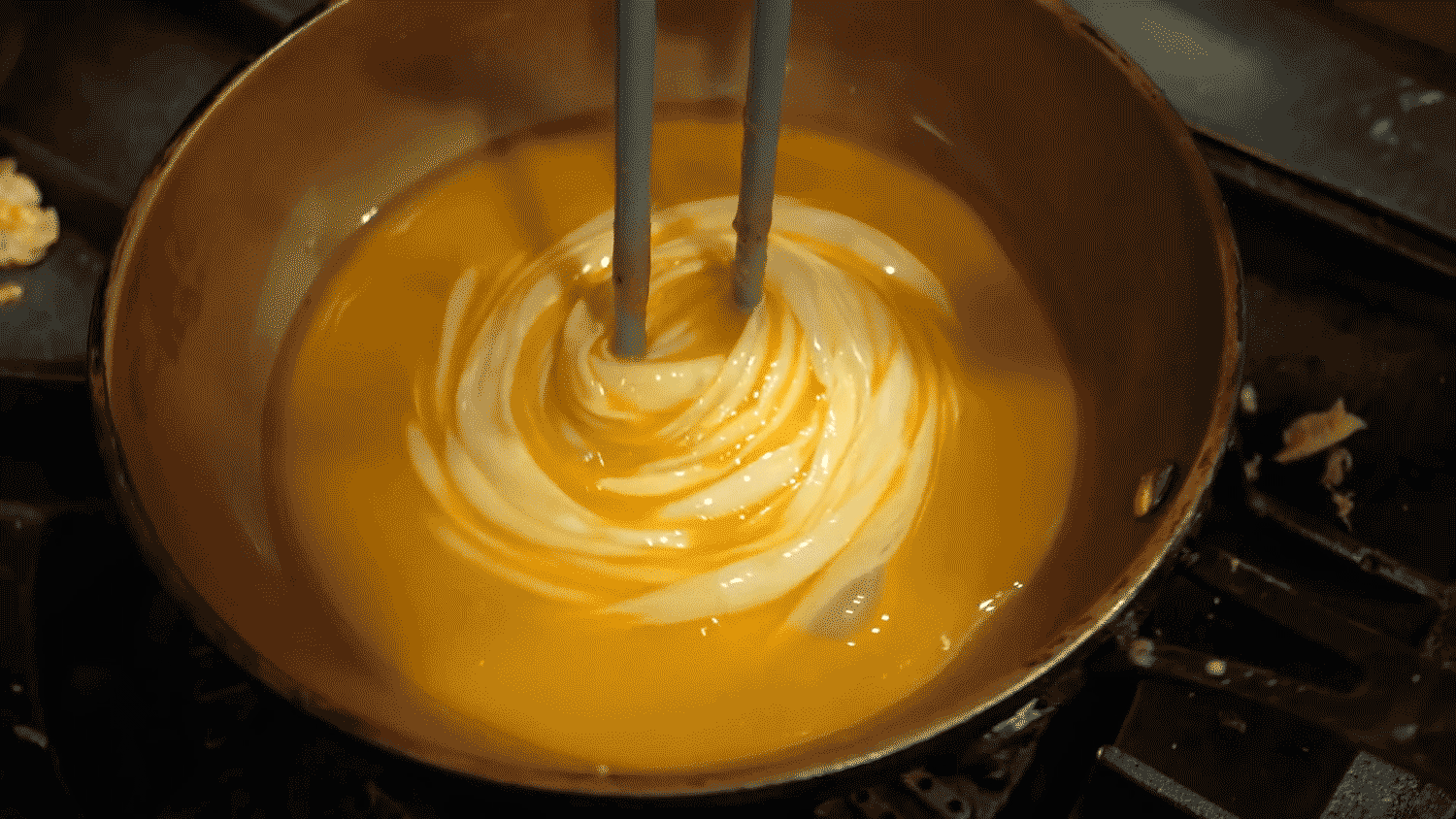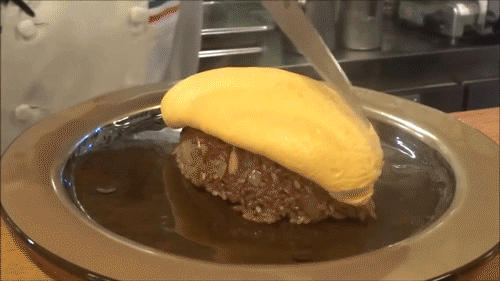
Resurrecting, and rethinking, the French warhorse in the age of omurice and TikTok.
The Relentless Perfection of the French Omelet
Maybe it’s the possibility of casually picking up a new skill that some people spend months in culinary school attempting to master, requiring nothing more than a dozen eggs, a stick of butter, a frying pan, and a fork. Or maybe it’s the lore about how the great French master Auguste Escoffier himself used to evaluate prospective employees using this single technique as a test. Or maybe it’s just a symptom of admiring Jacques Pepin’s impeccable rolling method for the past 25 years.
Whatever the reason, our collective obsession with perfecting the French omelet (and letting the world know about it through our preferred social media vehicle) has reached a fever pitch in the last few weeks, as we have been leaning more and more on our own kitchens as a source of entertainment and education. In mid-April, Bill Buford weighed in on his recommended technique in The New Yorker. Chef Ludo Lefebvre has begun hosting live omelet cook-alongs to show his Instagram followers how it’s done at his Los Angeles restaurant Petit Trois. People have been flocking to Instagram and even Twitter in record numbers to share the fruits of their fork-whisking labors, from the glossy, wrinkleless yellow exteriors sprinkled with chives to the cross-sections of buttery curds.
“I think that they are having a moment now because people are looking for options,” Lefebvre tells me. “It is hard, even for a trained chef, to figure out what to cook every day at home.” Plus, he points out, “People have time at home that they have not had before.”
For Nick Des, a now-out-of-work brunch cook in Philadelphia, quarantine has provided the time to perfect a skill that they didn’t really have the leisure to hone while working a busy egg station. And their girlfriend has been happy to eat all of these rolled omelets full of fresh herbs along the way. “It’s so simple and so complicated at the same time, and obviously I wanted to master the most difficult version of the thing that gave me so much trouble early on,” they tell me.
My one foray into French omelets several years ago revealed a difficult truth: Even if you have the patience to try again and again after failures (the occasional overly browned eggs or accidental scrambled eggs), you might not have the appetite or the supplies to eat four-egg omelets every day for a week. With enough tries, you’ll nail that homogenous texture and buttery sheen, but by then, you just might be in the mood for another kind of omelet. —Anna Hezel
Omurice and Friends
If you didn’t grow up eating omurice, it’s likely that your first encounter with it was through the internet—maybe via a Youtube dispatch from Tokyo, or scrolling past a beyond-satisfying slice shot down the middle. The Japanese interpretation of the French omelet, which is always served with a mound of fried rice, is similarly difficult to master, with its custardy-soft interior erupting out of a perfectly yellow and unbrowned layer of cooked eggs.

Umi Syam’s viral video of omurice
And much like its French predecessor, omurice has transcended its makeup of mere beaten eggs, oil, rice, and the optional (but recommended) ketchup or demi-glace sauce into an improbably perfect expression of eggs. It’s brought out a full-on obsession over a dish with modest homespun roots—as evidenced by the constant queues, from Hi-Collar in New York to Little Pool Coffee in Tokyo.
The future of omelets may simply be further iterations of omurice. More is most certainly more. Enter the tornado omelet—another rendition of an egg-blanketed fried rice, popularized at Western-style restaurant Egg Thumb in Seoul. Earlier this year, the dish blew up on YouTube, with its cooking technique that calls for chopsticks to anchor the layer of beaten eggs while rotating the skillet over heat to create soft, mesmerizing swirls. Not surprisingly, a flawlessly twirled omelet is difficult to master at home, with many factors to consider: heat levels, pan positioning, and the ever-present possibility of overcooking. “I tried two attempts and failed. It always ripped in the middle of the process,” says Umi Syam, who posted her own viral video of Kichi Kichi, a popular omurice destination in Kyoto.
But it seems that the mere idea of a perfectly cooked omelet supersedes reality. “It just feels like it’s one of those random YouTube finds that’s intriguing and you like watching the pros make it,” Syam says. “But you’ll also be fine and can let go of the fact that it takes a significant amount of practice to achieve a result even close.” —Tatiana Bautista
Omelets Are Big on TikTok
TikTok is a social network. Your teenage niece or high school son may have mentioned it? These days, the growing platform—and it’s growing, no doubt—is mostly for younger folks, and less-young folks who concern themselves with younger internet things. And even though the app is choked with lip syncs and dance routines, it’s also turning out to be a pretty interesting place to learn about food and cooking. And I’m not just talking about the net-fishing videos that leave me stunned and enchanted at 3:30 in the morning. I have my own account (shameless plug), but I’ve also been inspired to cook in different directions by users like Jaeki Cho, Tway Da Bae, and my buddy Daniel Holzman.
Recently I took to TikTok to find out what was happening with the omelet, where there are more than 130 million views for the #omelette hashtag. It’s clear that the omelet is perfectly suited for the platform. It requires few ingredients and little time, and the before (whole egg, stick of butter) and after (perfect volcanos and dry-egg disasters), as well as some inherent comedy from splattering egg yolks, just work so well on this platform of 52 million active users in March 2020. Here’s what I learned, beyond that omelets are yummy.
More Is More
Like any social video creator with the aims of their vid going viral, it’s obvious that size matters. Whenever the caption reads “57 eggs, wait for it,” something interesting is likely going to happen. And it does. This very large tortilla de patatas is impressive. Here’s an omelet burrito with 26 components.
Eggs and What?
I’m not sure what’s worse, making an omelet in a mug, or adding almond milk to the mix. Anyways, you can judge. Adding slices of baguette to an omelet is interesting. Okay, SPAM, rice, eggs, spices. Can get behind this one. An omelet cooked in a Ziploc bag?
Eating Challenges
The 50-omelet eating challenge is all kinds of something.
“I’m an Omelet”
This meme is disturbing, but you can’t look away. The second time is worse.
And let’s just admire this near-perfect tamagoyaki. More than 650,000 views later, it appears to be a hit. —Matt Rodbard